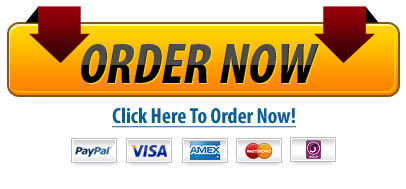Reference Guide to EDI
/in Assignment Help, Assignment Help Nursing, Homework Help, Nursing Exam Help, Nursing Paper Help, Psychology assignment help, Solved Nursing Essays /by StephenReference Guide to EDI
Imagine you are the office manager at a small doctor’s office. As the office manager, you are in charge of educating new hires. Write a 700- to 1,050-word reference guide describing electronic data interchange (EDI). Include the following in your summary:
Define EDI.
Explain how using EDI facilitates electronic transactions.
Explain how HIPAA has changed how health care information is transmitted in EDI.
Describe the relationship between Electronic Health Records, reimbursement, HIPAA, and EDI transactions.
Cite a minimum of two outside sources.
Reference Guide to Electronic Data Interchange (EDI) in Healthcare
As the office manager of a small doctor’s office, it is essential to ensure that new hires are well-educated on Electronic Data Interchange (EDI). EDI plays a crucial role in streamlining healthcare transactions and ensuring compliance with regulations such as the Health Insurance Portability and Accountability Act (HIPAA). This guide will define EDI, explain its benefits for electronic transactions, discuss HIPAA’s impact on EDI, and outline the relationship between Electronic Health Records (EHR), reimbursement processes, HIPAA, and EDI transactions.
Definition of Electronic Data Interchange (EDI)
Electronic Data Interchange (EDI) is a standardized method for exchanging business documents and data electronically between organizations, eliminating the need for paper-based transactions. In healthcare, EDI allows for the seamless exchange of important documents such as insurance claims, payment remittances, patient eligibility inquiries, and more. These transactions follow specific standards set by organizations like the Accredited Standards Committee X12 (ASC X12) and the National Council for Prescription Drug Programs (NCPDP) to ensure uniformity and interoperability across different systems (Kahn, 2020).
Facilitating Electronic Transactions
Using EDI significantly facilitates electronic transactions in several ways:
- Efficiency and Speed: EDI enables rapid processing of transactions, allowing healthcare providers to send and receive information almost instantaneously. This efficiency reduces the time it takes to process claims and receive payments, leading to improved cash flow for healthcare providers.
- Cost Savings: By minimizing paper usage, postage, and manual processing costs, EDI lowers administrative expenses. These savings can be particularly beneficial for small practices trying to manage overhead costs.
- Improved Accuracy: EDI reduces the chances of human error that often occur with manual data entry. Standardized formats ensure that the information sent and received is consistent, leading to fewer rejected claims and discrepancies in patient records.
- Enhanced Data Security: EDI transactions can be encrypted and transmitted securely, protecting sensitive patient information during exchange. This feature is critical in maintaining patient confidentiality and complying with regulatory standards.
Impact of HIPAA on EDI
The Health Insurance Portability and Accountability Act (HIPAA), enacted in 1996, significantly changed how healthcare information is transmitted via EDI. Key provisions of HIPAA include:
- Privacy Rule: HIPAA’s Privacy Rule establishes national standards for the protection of individually identifiable health information. EDI must comply with these standards, ensuring that sensitive patient data is only shared with authorized entities for legitimate purposes (U.S. Department of Health & Human Services, 2022).
- Security Rule: The HIPAA Security Rule sets standards for safeguarding electronic health information. This includes implementing technical safeguards like encryption and access controls, which are crucial when using EDI for transmitting sensitive data.
- Transaction Standards: HIPAA mandates the use of specific standards for EDI transactions, such as the X12 format for electronic claims submissions. This requirement ensures that all entities involved in the healthcare system utilize a consistent method for data exchange, facilitating smoother interoperability and communication.
Relationship Between Electronic Health Records, Reimbursement, HIPAA, and EDI Transactions
The integration of Electronic Health Records (EHR) with EDI transactions plays a vital role in the healthcare reimbursement process. Here’s how they are interconnected:
- EHR and EDI: EHR systems store comprehensive patient information, including demographics, medical history, and treatment plans. When healthcare providers submit claims for reimbursement, the data from the EHR can be automatically extracted and formatted into an EDI-compatible structure, streamlining the claims submission process.
- Reimbursement Process: Timely and accurate claims submission via EDI is essential for the reimbursement process. Insurance companies rely on electronic claims to assess the services provided and determine appropriate payment. Delays or errors in submitting EDI transactions can lead to payment delays, affecting the provider’s revenue cycle.
- Compliance with HIPAA: Compliance with HIPAA is paramount in all EDI transactions involving health information. Providers must ensure that any electronic data exchange adheres to HIPAA regulations, safeguarding patient information while facilitating timely reimbursements.
- Data Interoperability: The use of standardized EDI transactions allows different healthcare systems to communicate effectively. This interoperability ensures that patient data is accessible and up-to-date, which is essential for providing quality care and receiving appropriate reimbursements.
Conclusion
Electronic Data Interchange (EDI) is an essential tool in the healthcare industry, streamlining electronic transactions and improving the efficiency of claims processing and reimbursement. The implementation of HIPAA has strengthened the security and privacy of patient data transmitted via EDI, ensuring compliance with national standards. Understanding the relationship between EHR systems, reimbursement processes, HIPAA, and EDI transactions is critical for new hires in a healthcare setting, as it directly impacts the operational efficiency of the practice and the quality of patient care provided.
References
Kahn, R. (2020). Understanding electronic data interchange (EDI) in healthcare. Health IT Outcomes. https://healthitoutcomes.com/doc/understanding-electronic-data-interchange-edi-in-healthcare-0001
U.S. Department of Health & Human Services. (2022). Summary of the HIPAA Privacy Rule. https://www.hhs.gov/hipaa/for-professionals/privacy/laws-regulations/index.html



